 Do you need to spend less time on repetitive social media tasks?
Do you need to spend less time on repetitive social media tasks?
Are you looking for tools that let you balance automation with a personal touch?
In this article, you'll discover nine tools to help marketers save time while maintaining a human presence on social media.
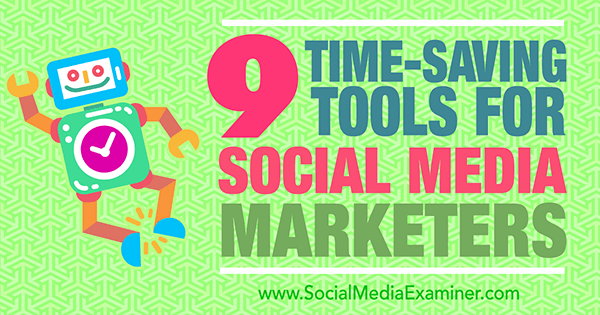
Listen to this article:
Where to subscribe: Apple Podcasts | Spotify | YouTube Music | YouTube | Amazon Music | RSS
Relationship-building Tools
Just like any relationship, connecting on social media starts with finding the right people and reaching out in a human way. Here are some automation tools to help you do that.
#1: Notifier
Linking to other people's amazing content not only helps establish your own authority, but is also one of the best ways to make meaningful connections. If you're smart about leveraging those connections, you'll reach out directly every time you include someone else in your own work.
With Notifier, simply enter the URL into an article you've published (whether on your own site or as a guest contributor) and the tool will pull out all of the people mentioned in the post, tag them based on their Twitter handles, and queue up those shares via Buffer.
Here's what a recent article pulled in.
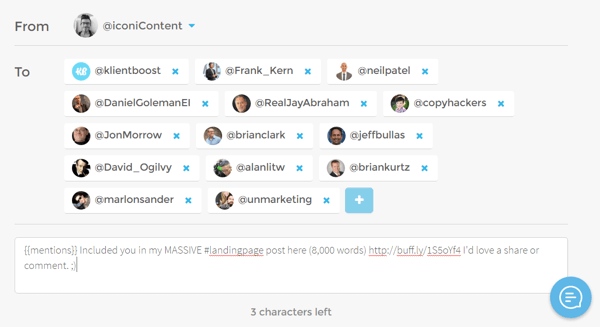
Notifier then lets you select how many mentions you want to include in each share and will schedule them to drip out over a chosen time frame.
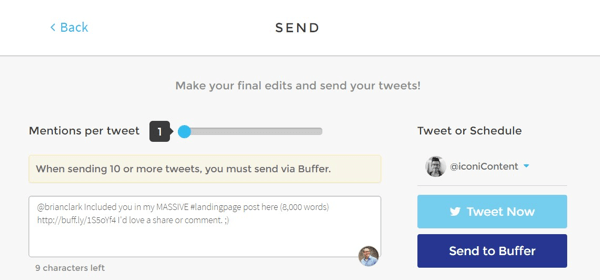
#2: Leadfeeder
Visitors pass through your digital presence every day by browsing on your website, looking at your product or services pages, or maybe even consuming your content, all without submitting their information. This means that most of the time you have no digital record that those visitors even exist (outside of raw Google Analytics traffic counts).
Leadfeeder is especially valuable to B2B organizations, because it will connect your onsite Google Analytics with your visitors' off-site social profiles so you can see who's coming to your site, which company they're from, and what they're interested in.
Once you've identified your visitors, you can easily assign visitors to a campaign, customize your automated responses based on what they've shown interest in, and then measure the results.
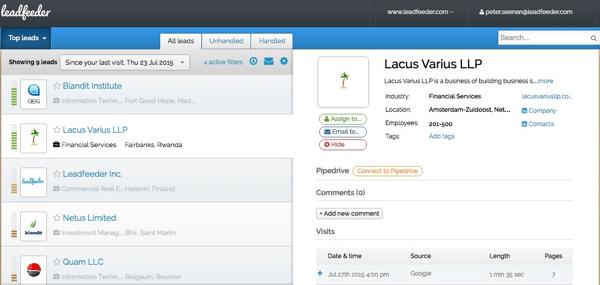
#3: Socedo
Many marketers overlook the bottom-line benefits of lead generation on social media because they haven't found the right tool to automate prospecting and report key metrics like testing.
Similar to Leadfeeder, Socedo is another great tool that helps you zero in on your ideal prospects via Twitter and LinkedIn, so you can collect their profile information and add them to your sales pipeline and CRM.
Get World-Class Marketing Training — All Year Long!
Are you facing doubt, uncertainty, or overwhelm? The Social Media Marketing Society can help.
Each month, you’ll receive training from trusted marketing experts, covering everything from AI to organic social marketing. When you join, you’ll also get immediate access to:
- A library of 100+ marketing trainings
- A community of like-minded marketers
- Monthly online community meetups
- Relevant news and trends updates
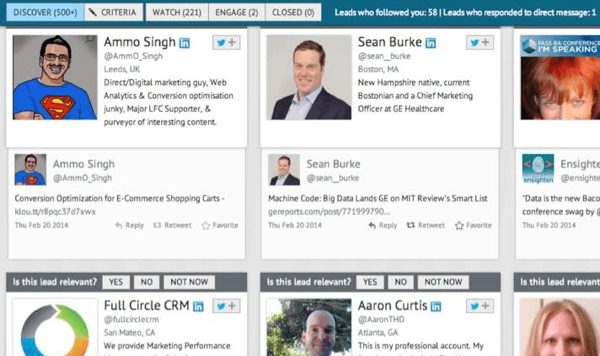
Most notably, Socedo's analytics provide robust reporting that links directly to platforms like HubSpot. This allows you to see exactly how specific campaigns have paid off, both on engagement and ultimate conversions.
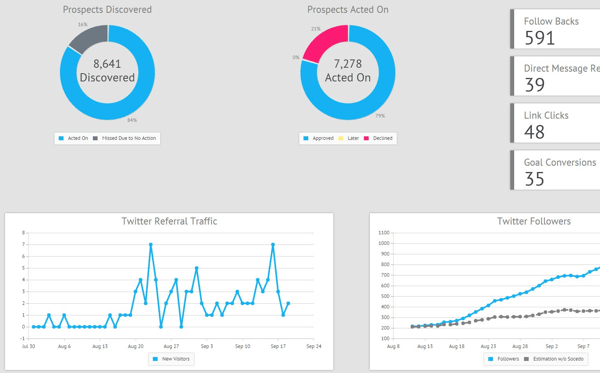
Having a system in place that treats social leads differently from more heavy-handed email campaigns is vital, especially if you want to stay human.
Commerce Tools
When it comes to advertising, selling, and customer service on social, things get even more inhuman than merely connecting with new leads. Here are three tools that strike an excellent balance among making the sale, supporting current customers, and being genuinely social.
#4: Yotpo
User-generated marketing in the form of reviews and recommendations is one of the most powerful purchase drivers online. While many websites feature reviews and testimonials, they drop the ball when it comes to sharing those same golden nuggets natively on social media.
Enter Yotpo. Yotpo will incentivize reviews by offering bonuses or coupons to your existing customers. It will collect your reviews in a centralized database for easy access and allow you to instantly “push” your reviews both to your website and your social streams.
Take Nest Bedding, for instance. Using Yotpo, Nest Bedding was able to integrate user-generated content into a host of their social selling platforms, most notably Facebook.

Why this relentless “customer-centric” focus? Easy. Because, in the words of Nest Bedding's founder Joe Alexander, “These people [your real customers] are basically your sales team.”
#5: rFactr
rFactr's SocialPort tool is one of the few social selling tools designed to include a scalable training program for sales representatives operating on social media. It boasts an impressive lineup of clients including SAP, Microsoft, Intuit, and IBM.

Discover Proven Marketing Strategies and Tips
Want to go even deeper with your marketing? Check out the Social Media Marketing Podcast! Publishing weekly since 2012, the Social Media Marketing Podcast helps you navigate the constantly changing marketing jungle, with expert interviews from marketing pros.
But don’t let the name fool you. This show is about a lot more than just social media marketing. With over 600 episodes and millions of downloads each year, this show has been a trusted source for marketers for well over a decade.
rFactr focuses on creating social-specific content, as well as tracking and optimizing that content. Even better, instead of adopting a one-size-fits-all approach, SocialPort will connect automated leads with actual humans within your company.
You can then monitor these interactions to ensure quality and brand consistency according to each user's skill set or role.

Finally, rFactr's social intelligence analytics board lets you view and analyze all of the results brought in across your social media channels.
#6: Shopify
Automating the commerce side of your social media shouldn't end with attracting new customers. Instead, make customer service and retention a top priority.
As Stephanie Shkolnik explains, this includes developing a plan for both “managing crisis scenarios,” like customer complaints, as well as the wider scope of using “social media to support business objectives to build and maintain relationships with your target audience.”
On the customer complaints front, timeliness is paramount. According to The Social Habit, 32% of customers who reach out via social expect a response within 30 minutes and 42% expect a response within 60 minutes. As for the wider scope of building and maintaining relationships, rather than relegate key customer-service touch points like order confirmation and tracking to email, you can now communicate directly with customers via their social platforms.
Shopify's Facebook integration, for example, lets you engage in genuine conversations with your customers.
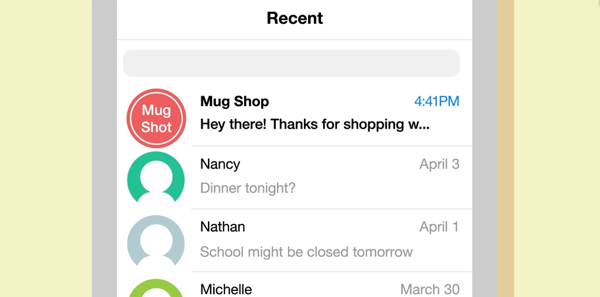
Content Curation Tools
Once you've gathered a killer following, you need to continue to share relevant, valuable, and engaging content with those followers. Realistically, keeping your social accounts topped off with shareworthy content is often a full-time job. These three tools, however, can help immensely.
#7: Quuu
Unlike other automated posting tools, Quuu will create handcrafted and human-approved social media posts. Simply hook up the tool to your Buffer account and then choose topics you want to tweet about.

You can then decide if you want Quuu to start posting automatically, or if you would rather preview suggested posts via email.
#8: Crate
Similar to Quuu, Crate is another tool that suggests content. It too works in conjunction with Buffer. Unlike Quuu, though, Crate gives you more direct control over what you post. You get precrafted curated tweets to fill your content pipeline.
You start by building “crates” based on combining topical categories like marketing or CRO, websites, and/or Twitter accounts. To get even more specific about the kind of content you want, add hashtags and positive and negative keywords.
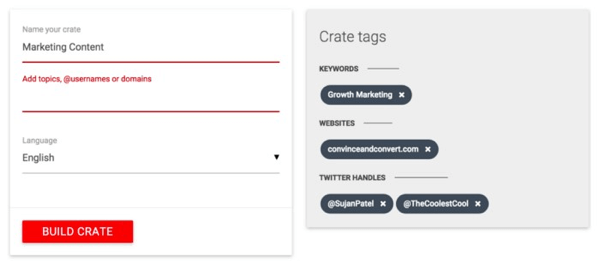
Crate then creates a large stream that sorts through it all and gives you posts to share, which you can then drop into Buffer.
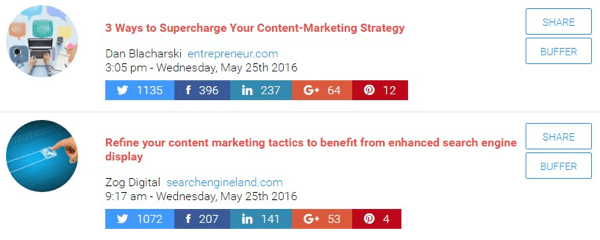
#9: ClearVoice
To start, ClearVoice is far more than a content curation platform. With its paid side, you get access to a full-scale workflow-management suite plus content creation and distribution tools.
However, you can search the content library for free if all you're looking for is help identifying shareworthy content to fill your social queue.
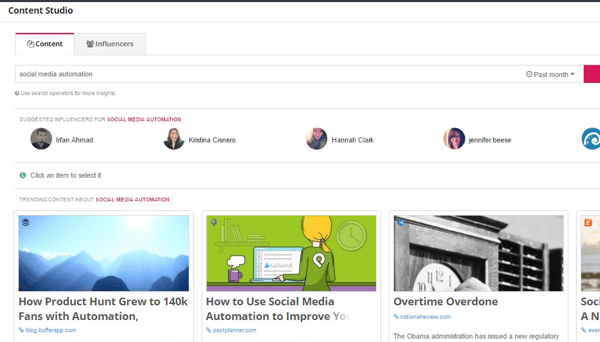
ClearVoice brings together an algorithmic recommendation system based on keywords and social metrics and human contributions from some of content marketing's biggest influencers. You can sort your results either by “Content” or by “Influencers.”
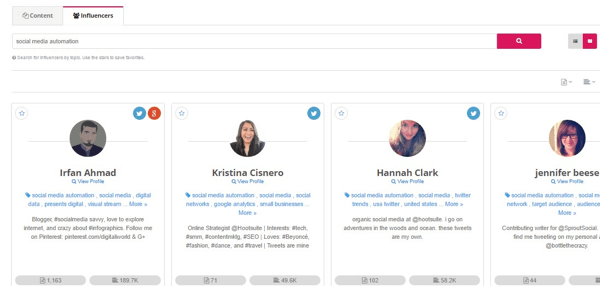
Naturally, ClearVoice isn't a set-it-and-forget-it tool like Quuu, but it does radically simplify content gathering and leads you directly to the best “what” and “who” to share.
Conclusion
It's true, social media automation is a love/hate thing. The downside is obvious. More often than not, social media automation robs your social media effort of the very thing it needs most: humanity.
The good news is that investing in the right tools, whether your focus is connection, commerce, or content, can save you from coming off as slimy, aggressive, and inhuman.
What do you think? Do you have your own social media automation horror story to share? Or better yet, a favorite tool? Please share your thoughts in the comments below!
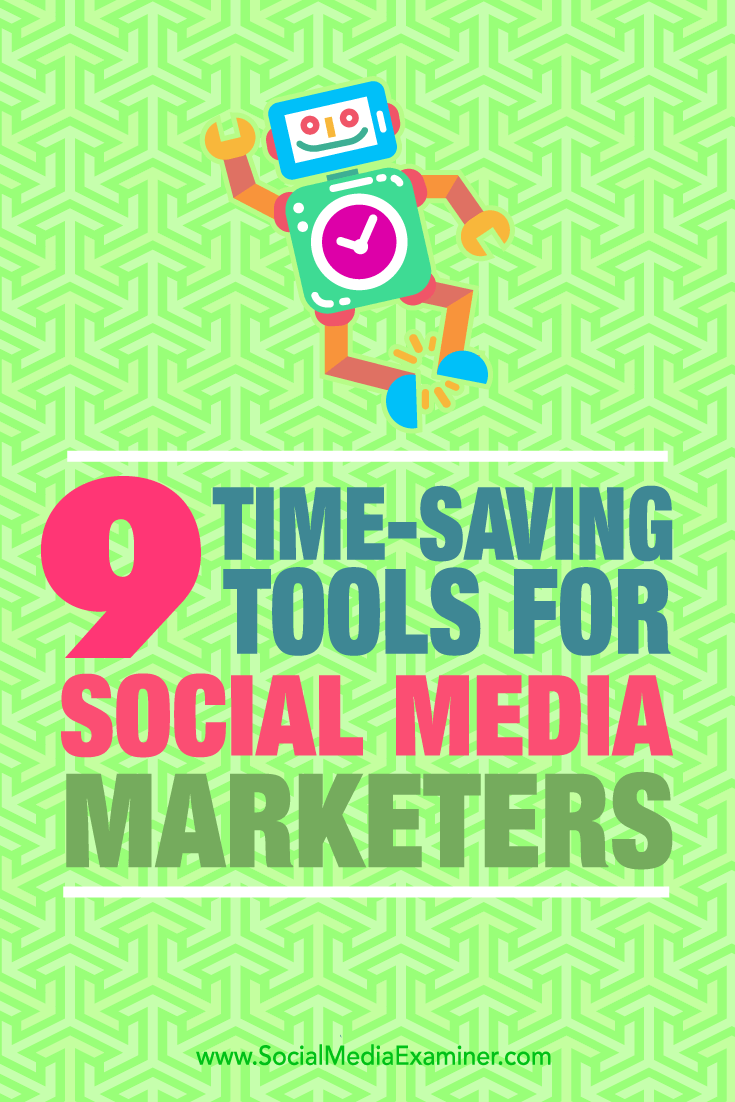
Attention Agency Owners, Brand Marketers, and Consultants

Introducing the Marketing Agency Show–our newest podcast designed to explore the struggles of agency marketers.
Join show host and agency owner, Brooke Sellas, as she interviews agency marketers and digs deep into their biggest challenges. Explore topics like navigating rough economic times, leveraging AI, service diversification, client acquisition, and much more.
Just pull up your favorite podcast app, search for Marketing Agency Show and start listening. Or click the button below for more information.

